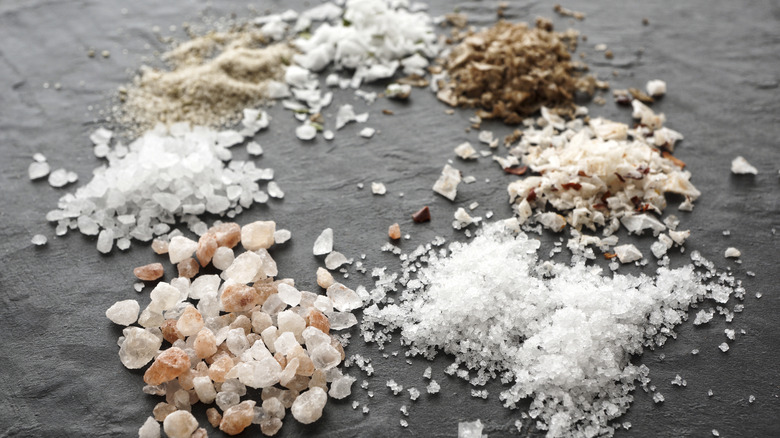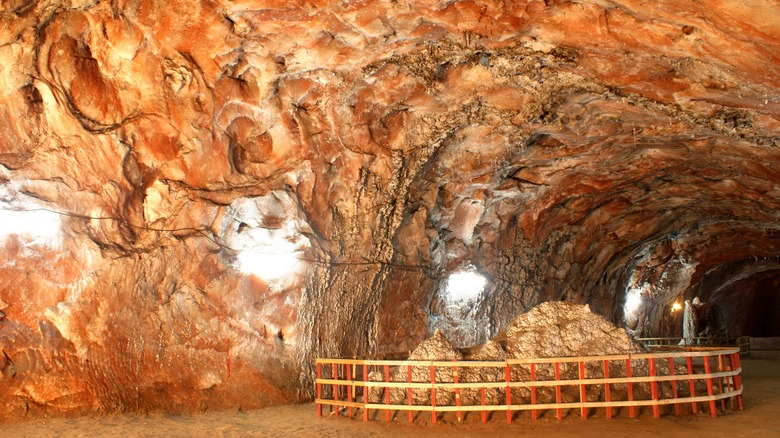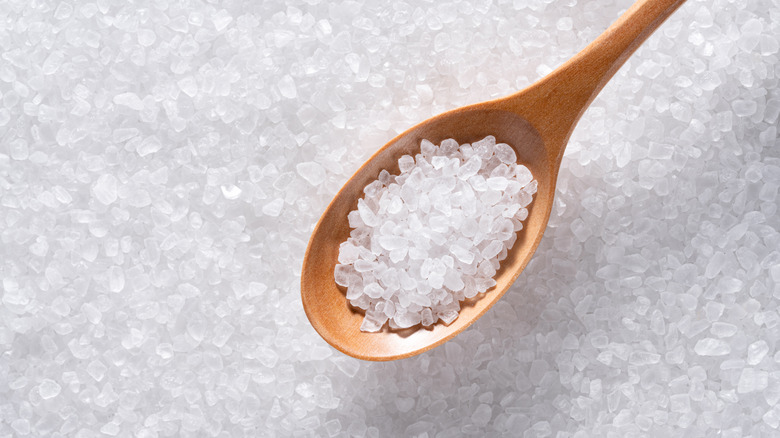The Key Difference Between Himalayan Vs Sea Salt
Salt has been used to season and preserve food for centuries, and this magical union of sodium and chorine plays a key role in many biological functions. Long gone, however, are the days of American pantries primarily stocking a blue-and-white container of Morton's table salt — even Ina Garten refuses to use it. Shelves full of gourmet, artisanal salts can be any foodie's kryptonite, especially with manufacturers touting numerous health benefits of these specialty salts — particularly Himalayan salt and sea salt. So what's the difference?
When push comes to salty shove, any salt on the market is going to be at least 98% sodium chloride. From a nutritional standpoint, both Himalayan and sea salt contain small amounts of trace minerals, so the amount of salt used in a recipe is more important than the variety. The primary difference between these two salts is how they are produced. Pink Himalayan salt is mined from Pakistan's Khewra mine, while sea salt forms from the natural evaporation of ocean water.
How Himalayan salt is produced
It may come as a surprise that the trendy pink Himalayan salt is not sourced among lofty snow-covered peaks, but rather hand-dug out of the ground in a rather hot and arid region of Pakistan. The Khewra mine, were all Himalayan salt is mined, is located in the Salt Range hills that mark the very edge of the Himalayan mountain range. Legend has it that these salt deposits were discovered by Alexander the Great in 320 B.C. — or rather, by his horses, who began licking the rocks. The mine contains over 6 billion tons of salt, which was left behind by an ancient lagoon that used to exist in the area. Although the amount of salt in the cave is enormous, the fact that Himalayan salt is mined from a particular location makes it a finite resource.
Himalayan salt can be purchased in a wide variety of forms, including finely ground, larger crystals, and cooking planks for grilling. The larger crystals can be a good substitute for kosher salt, especially when seasoning steaks. The cooking planks are an eye-catching swap for cedar planks, making it easy to subtly season delicate grilled or oven-roasted fish fillets and prevent them from sticking. Himalayan salt also has a slightly milder and earthier flavor than sea salt.
When to cook with sea salt
While Himalayan salt is mined by hand, sea salt – a renewable resource, unlike Himalayan salt — forms when ocean water evaporates. The world's oceans contain approximately 3.5% salt, making them a natural and easily accessible source of this essential nutrient. As the water evaporates into the atmosphere, the dissolved sea salt is left behind and eventually harvested and packaged. To assist in the evaporation process, most industrial sea salt production takes place in parts of the world that are naturally dry and frequently windy, including the Mediterranean and Australia.
As a whole, sea salt tends to have a more briny, less sweet taste than Himalayan salt. It is also available in a variety of textures. One of the most expensive sea salts in the world is "fleur de sel," meaning "flower of salt" in French. This delicate, flaky salt is harvested by hand from the top of French salt marsh ponds when weather conditions are just right. However, fleur de sel is best used as a finishing salt to enhance food's flavor, rather than during the cooking process. When using larger sea salt crystals, you might find that you need to use more sea salt than you would table salt to achieve the same effect, as one teaspoon of fine table salt is far more concentrated than a similar measure of sea salt.



